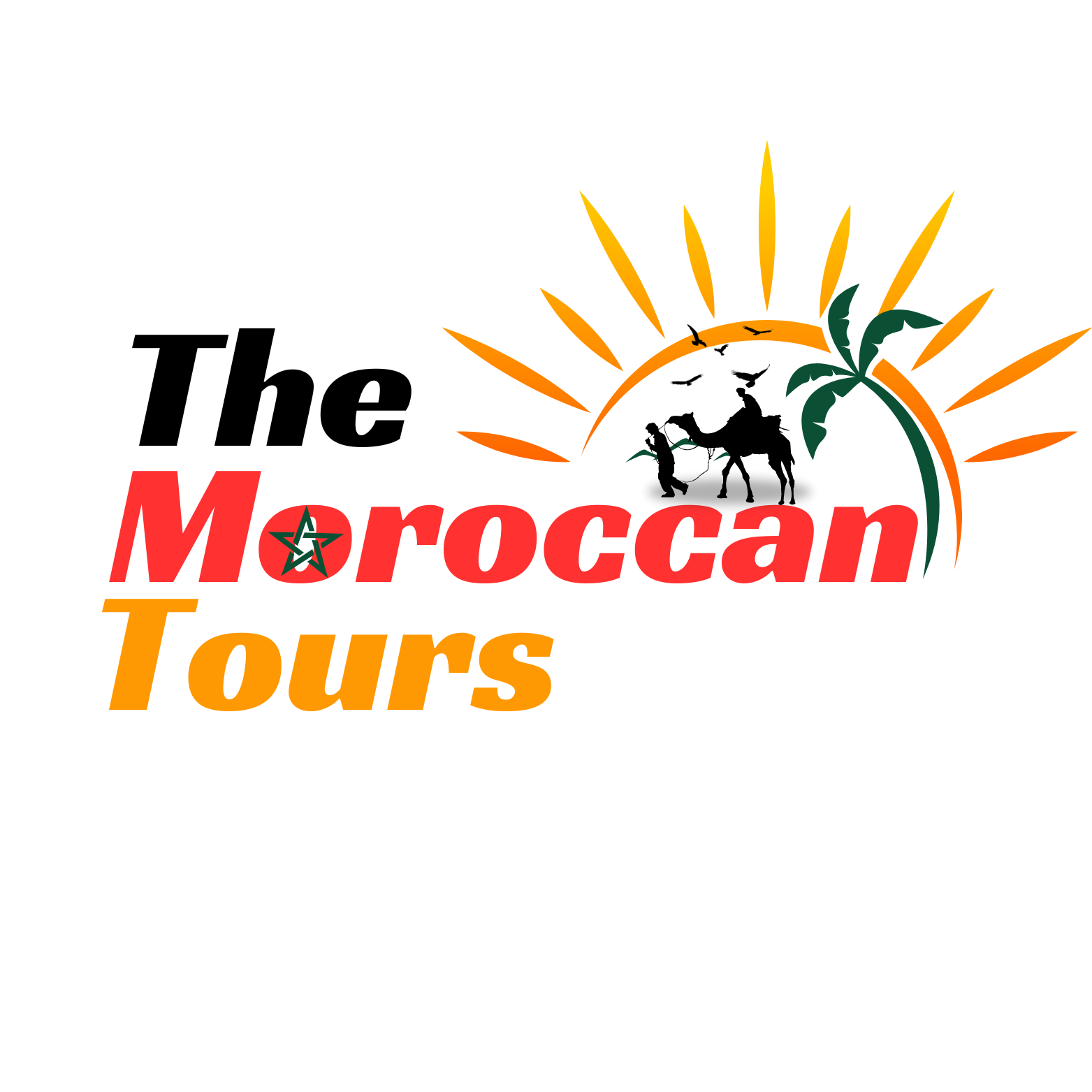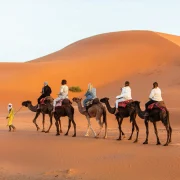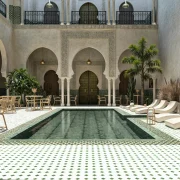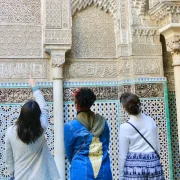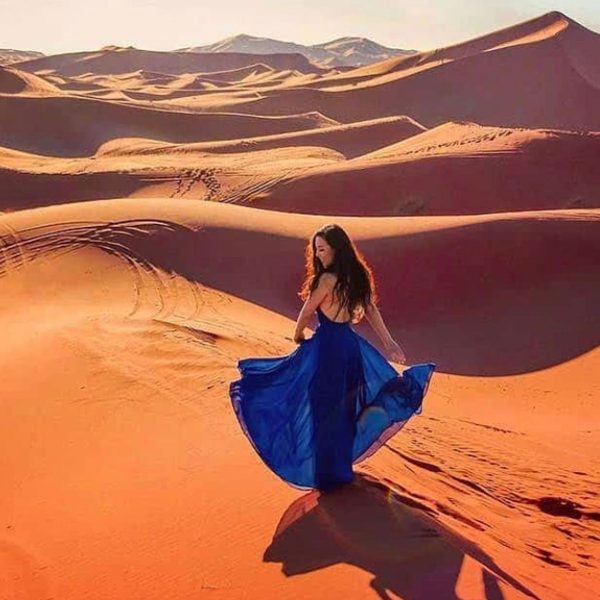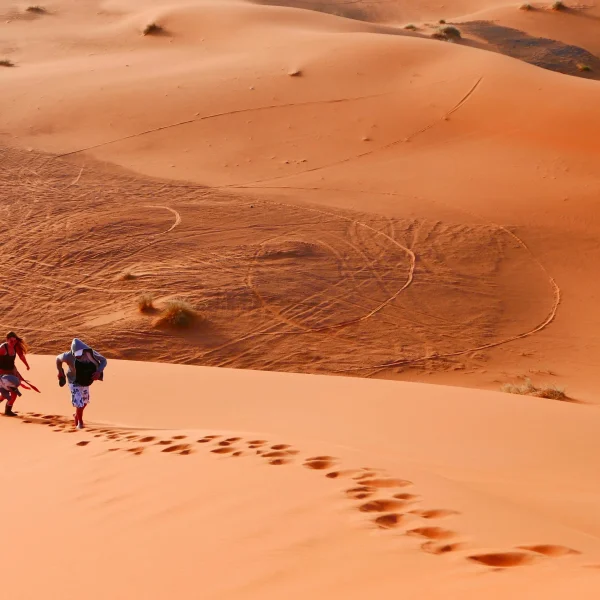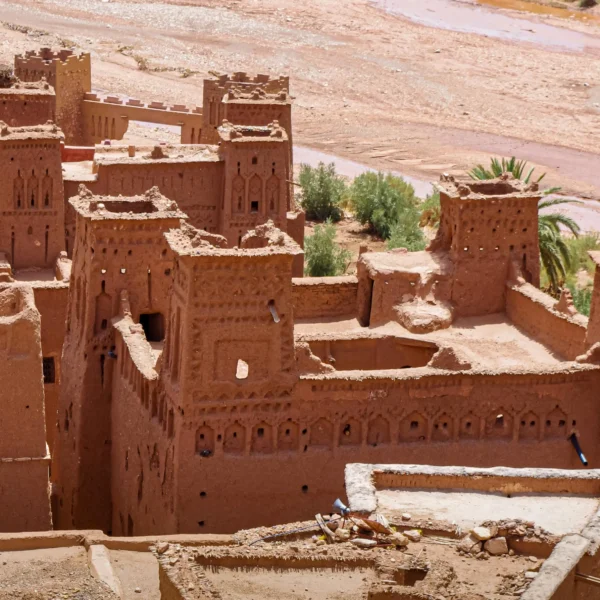
Merzouga: Ultimate Guide to Morocco’s Sahara Desert Paradise
Table of Contents
ToggleDiscovering the Magic of Merzouga
Have you ever dreamed of standing atop golden sand dunes that stretch as far as the eye can see, with nothing but silence and stars surrounding you? That’s exactly what awaits in Merzouga, Morocco’s gateway to the magnificent Sahara Desert. As someone who’s felt the soft sand between my toes and watched the sun paint the dunes in shades of amber and gold, I can tell you that Merzouga isn’t just a destination—it’s an experience that touches your soul.
Nestled in southeastern Morocco, Merzouga serves as the entry point to the breathtaking Erg Chebbi dunes, one of the country’s two Saharan ergs (large seas of dunes). Unlike many tourist hotspots that lose their charm with popularity, Merzouga has somehow maintained its authentic Berber character while welcoming visitors from across the globe.
“The desert has a way of stripping everything down to essentials. In Merzouga, you rediscover what truly matters—connection, wonder, and the simple joy of existence.”
What Makes Merzouga a Must-Visit Destination in Morocco
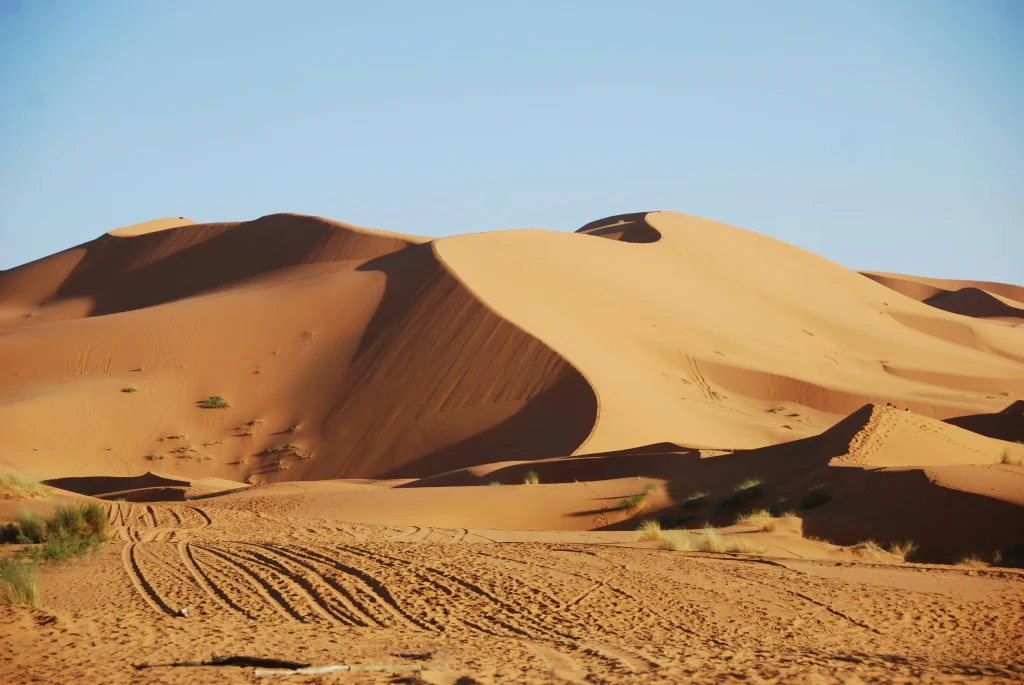
What sets Merzouga apart from other desert destinations? It’s the perfect blend of accessibility and authenticity. You can experience the true Sahara without venturing too far from civilization, yet feel completely immersed in the desert’s timeless beauty.
The Erg Chebbi dunes rise dramatically from the surrounding flat desert landscape, reaching heights of up to 150 meters in places. Their ever-shifting shapes create a mesmerizing landscape that changes by the hour as light and shadow dance across their faces. Unlike other desert regions that require lengthy expeditions, Merzouga offers the quintessential Saharan experience within a relatively compact area.
But it’s not just about the landscape. Merzouga is home to warm, hospitable Berber communities who have adapted to desert life for centuries. Their rich cultural traditions, from music and handicrafts to cuisine and architecture, add depths of meaning to your desert adventure.
Geographic Location and Best Times to Visit
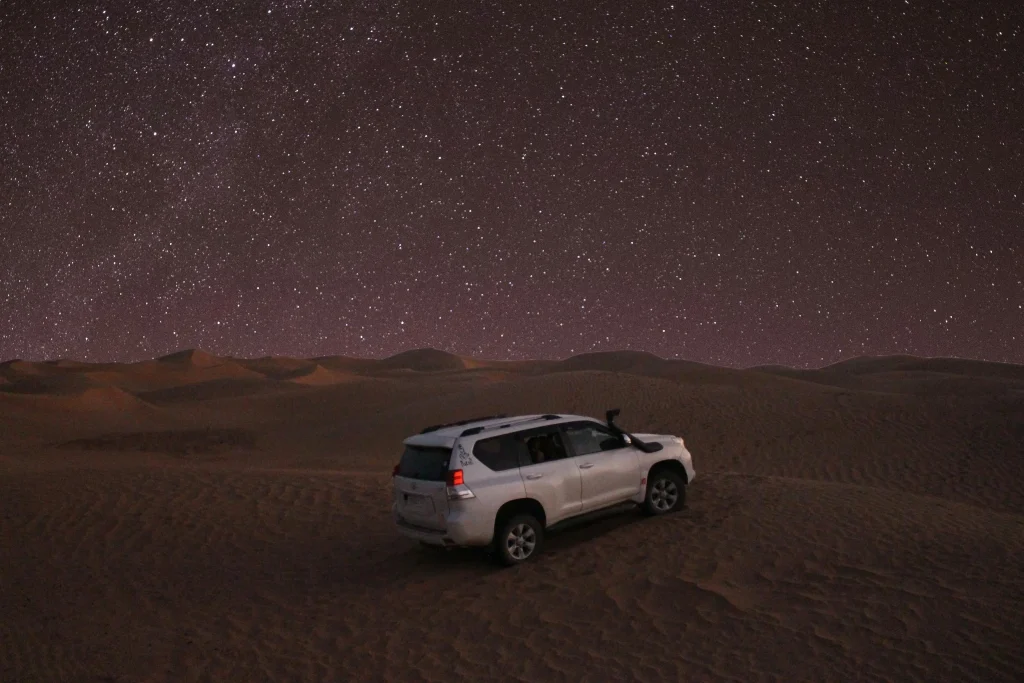
Merzouga sits in the southeastern part of Morocco, approximately 350 miles (563 km) from Marrakech and 279 miles (450 km) from Fes. It’s located at the edge of the Sahara Desert, near the Algerian border. This remote location contributes to its pristine desert environment and spectacular night skies unmarred by light pollution.
When should you plan your visit? The climate in Merzouga follows the typical desert pattern of extreme temperatures:
🗓️ Best Time to Visit Merzouga – Seasonal Weather Overview
| Season | Months | Temperature | Experience |
|---|---|---|---|
| Spring | March – May | 77–95°F (25–35°C) | Comfortable temperatures, occasional desert wildflowers |
| Summer | June – August | 95–113°F (35–45°C) | Extremely hot, intense sun, challenging for most travelers |
| Fall | September – November | 77–95°F (25–35°C) | Pleasant temperatures return, fewer tourists—ideal for peaceful exploration |
| Winter | December – February | 68°F (20°C) day / 32°F (0°C) night | Cool days and chilly nights, perfect for starry skies and desert clarity |
✅ Pro Tip: Spring and fall are the most popular and comfortable seasons to visit Merzouga, especially if you’re planning a camel trek or a night in a desert camp!
Most travelers consider spring (March to May) and fall (September to November) to be the ideal times to visit. During these months, the daytime temperatures are pleasant for desert exploration, and the nights aren’t unbearably cold. The summer months can be brutally hot, with temperatures sometimes exceeding 113°F (45°C), making outdoor activities challenging.
Winter offers its own unique charm, with perfectly clear skies and moderate daytime temperatures, although nights can drop to freezing. If you don’t mind bundling up after sunset, the winter months offer the added benefit of fewer tourists and even more spectacular stargazing opportunities.
The Magnificent Erg Chebbi Dunes: Merzouga’s Crown Jewel
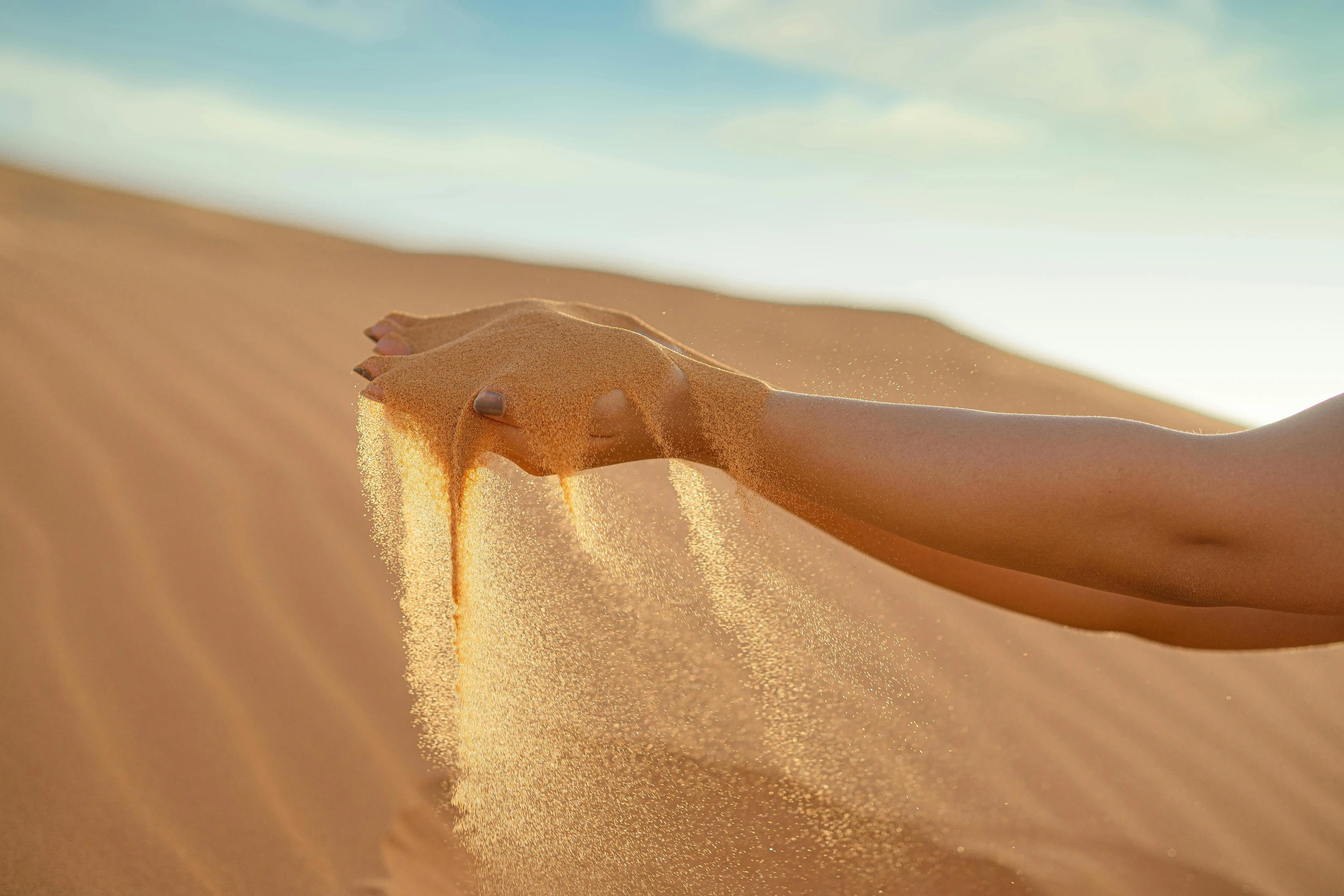
When you first lay eyes on the Erg Chebbi dunes, time seems to stand still. These massive formations of wind-blown sand stretch approximately 22 miles (35 km) from north to south and reach widths of about 3-6 miles (5-10 km). Their distinctive reddish-orange color becomes even more pronounced during sunrise and sunset, creating a photographer’s paradise.
Understanding the Unique Formation of Erg Chebbi
The story of how these magnificent dunes formed is as fascinating as their appearance. Unlike the rocky desert landscapes (hamada) that cover much of Morocco’s arid regions, Erg Chebbi represents a true erg—a vast sea of sand dunes.
These dunes began forming millions of years ago through a combination of geological forces and wind patterns. The sand originates from ancient weathered mountains and was carried by wind and occasional water flows to its current position. Over countless millennia, the relentless Saharan winds have shaped and reshaped the sand into the spectacular dunes we see today.
What makes Erg Chebbi particularly special is its isolation. It rises dramatically from the surrounding flat desert landscape, creating an island of towering dunes that seems almost otherworldly. Each dune has its own character—some feature sharp, defined crests while others form more gentle slopes. The largest dunes can reach heights of up to 150 meters (492 feet), offering breathtaking panoramic views for those willing to make the climb.
Spectacular Sunset and Sunrise Experiences
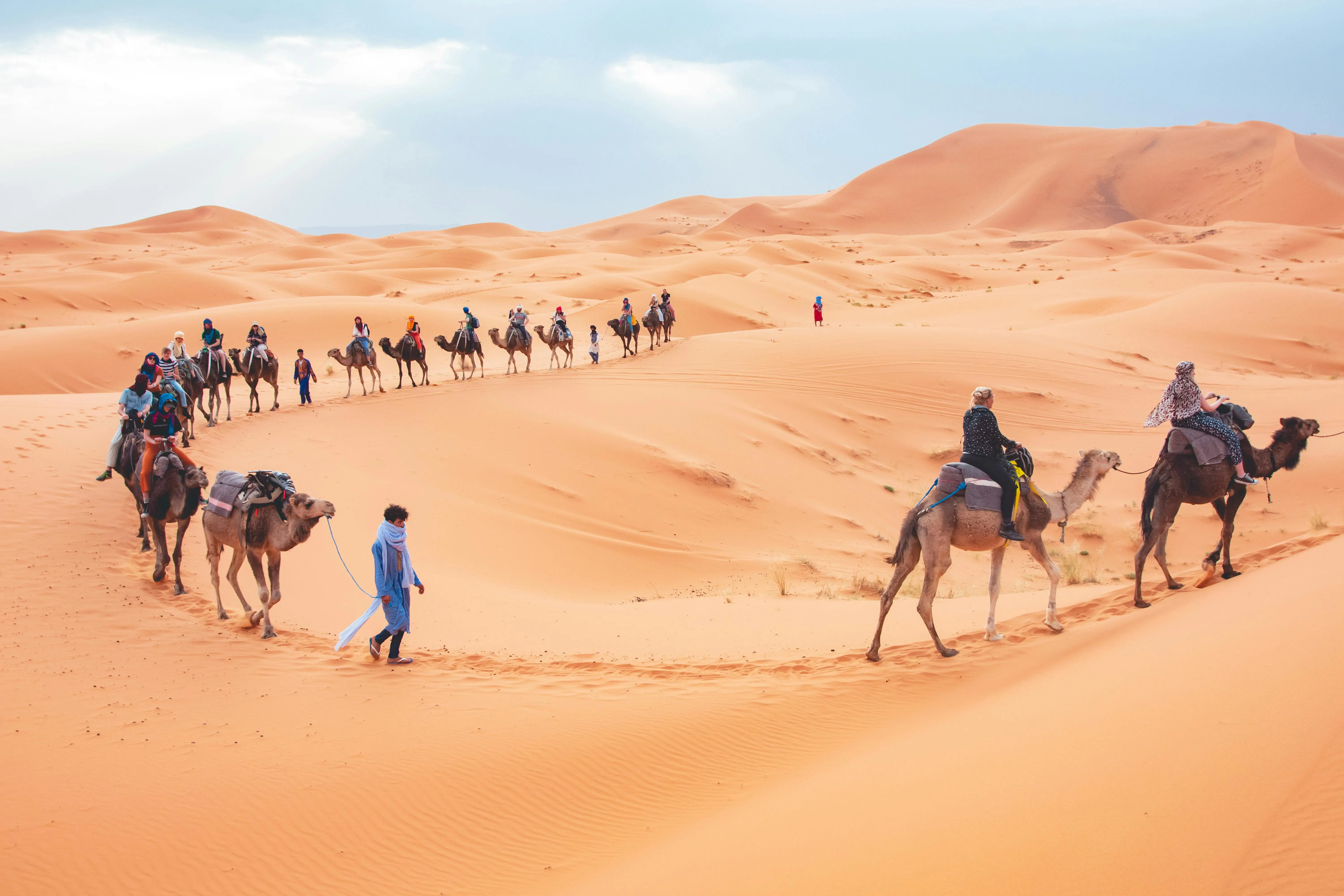
If there’s one experience you absolutely cannot miss in Merzouga, it’s witnessing the transformation of the dunes during sunset and sunrise. These magical moments offer more than just pretty views—they’re deeply moving experiences that many travelers describe as spiritual.
Sunset in Erg Chebbi begins with the golden hour, when the low-angled sunlight intensifies the dunes’ natural orange-red color. As the sun descends toward the horizon, the landscape becomes a canvas of dramatic shadows and vibrant hues. Each ripple and curve in the sand becomes highlighted, revealing the intricate patterns that wind has created. The temperature begins to drop noticeably, bringing welcome relief after the day’s heat.
“There’s a moment just as the sun touches the horizon when the dunes seem to catch fire, glowing with an intensity that photographs can never fully capture. It’s not just something you see—it’s something you feel.”
Sunrise offers an equally magical but distinctly different experience. As the first light appears on the eastern horizon, the dunes transition from dark silhouettes to increasingly detailed forms. The cool night air gives the morning light a crystal clarity, and watching the shadow line recede across the dune field as the sun climbs higher is mesmerizing.
Both experiences are worth planning your schedule around. Many desert camps position their accommodations to maximize these views, but for the most immersive experience, arrange to be atop one of the higher dunes during these golden hours.
Cultural Immersion: Berber Life in Merzouga
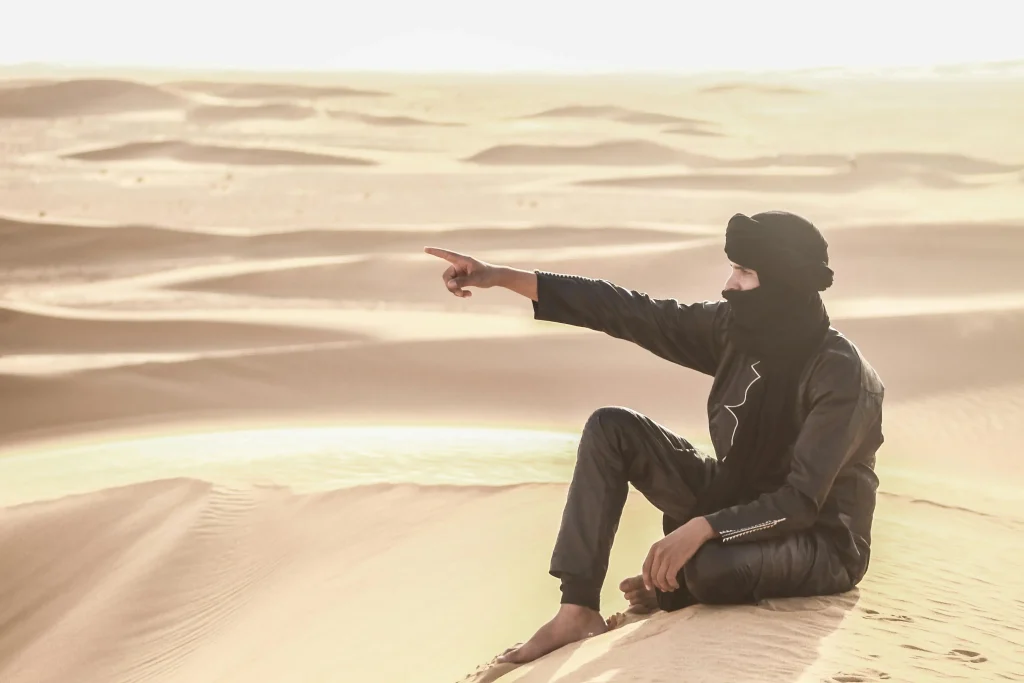
Behind the stunning natural beauty of Merzouga lies an equally fascinating cultural landscape. The region is predominantly inhabited by Berber people, the indigenous inhabitants of North Africa whose presence in the region predates Arab influence by thousands of years.
Traditional Music, Dance, and Ceremonies
Music forms the heartbeat of Berber culture in the desert, and no visit to Merzouga is complete without experiencing the rhythmic sounds of traditional instruments. The most iconic musical tradition you’ll encounter is Gnawa music, which has roots in sub-Saharan Africa and was brought north by formerly enslaved people.
Gnawa performances often feature the distinctive sound of the sintir (a three-stringed bass lute) accompanied by large metal castanets called qraqeb that create hypnotic, rhythmic patterns. These performances aren’t just entertainment—they’re often connected to healing ceremonies and spiritual practices that have been passed down through generations.
Evening gatherings around campfires frequently include demonstrations of traditional dances. Men and women may perform separately or together, depending on the occasion. The movements often tell stories of desert life, historical events, or celebrations like weddings and harvests.
If you’re fortunate enough to visit during a festival or celebration, you might witness more elaborate ceremonies that blend pre-Islamic Berber traditions with Islamic practices. These events offer rare insights into the spiritual life of desert communities and their connection to the harsh but beautiful environment they call home.
Authentic Berber Cuisine and Tea Ceremonies
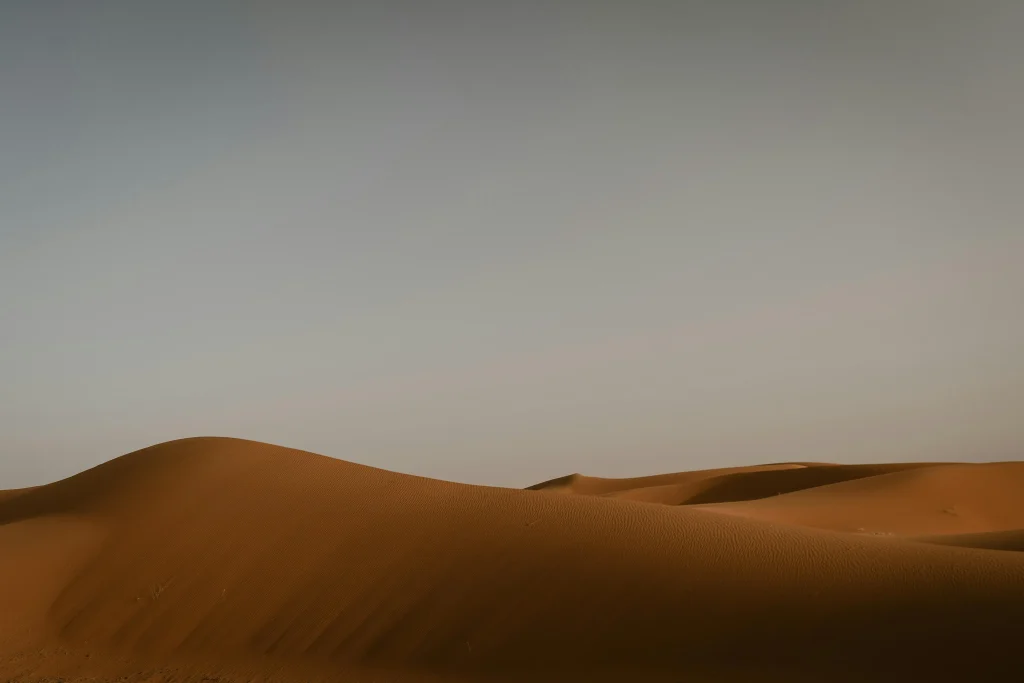
Berber culinary traditions in Merzouga reflect the ingenuity of desert dwellers who have learned to create flavorful, nourishing meals from limited ingredients. Meals often center around tagine—a slow-cooked stew named after the distinctive conical clay pot in which it’s prepared. Desert versions might include lamb or chicken with dried fruits, olives, and aromatic spices like cumin, turmeric, and cinnamon.
Another staple you’ll encounter is couscous, traditionally served on Fridays. The preparation process is time-consuming and often becomes a social activity for families. The tiny semolina granules are steamed over a flavorful broth containing vegetables and meat, absorbing the rising flavors.
But perhaps the most emblematic culinary experience in Berber culture is the tea ceremony. More than just a beverage, Moroccan mint tea represents hospitality, friendship, and the unhurried pace of desert life.
The Traditional Tea Ceremony Process:
- Washing the Chinese gunpowder green tea leaves
- Boiling water in a traditional metal teapot
- Adding tea leaves, fresh mint, and sugar
- Pouring the tea from height to create a frothy top
- Serving three rounds (each with slightly different flavors)
There’s a saying in Morocco: “The first glass is as gentle as life, the second as strong as love, the third as bitter as death.” This refers to the changing flavor as the tea continues to steep through multiple servings.
When invited to share tea with local families or guides, accept the opportunity! It’s during these informal gatherings that the most meaningful cultural exchanges often occur.
Adventure Activities in the Merzouga Desert
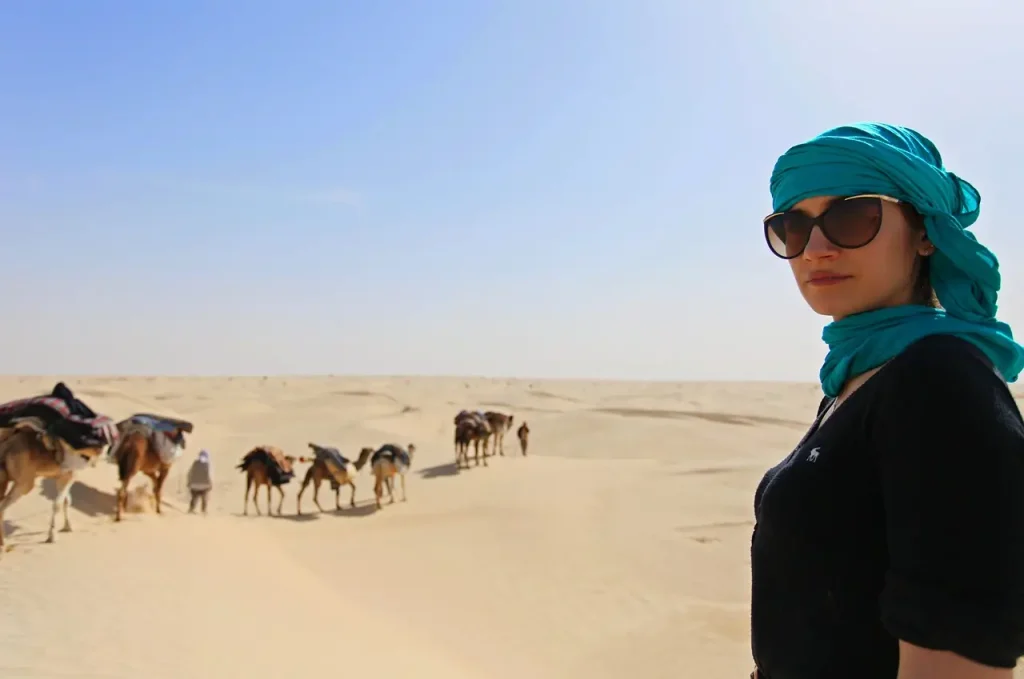
The magnificent landscape around Merzouga isn’t just for looking at—it’s a playground for adventure seekers. Whether you prefer traditional modes of exploration or modern thrills, the desert offers activities to suit every taste and energy level.
Camel Trekking Through the Golden Dunes
There’s something profoundly right about exploring the Sahara the same way traders and nomads have for thousands of years—atop a camel. These remarkable animals, often called “ships of the desert,” are perfectly adapted to the harsh environment with their broad feet that don’t sink into the sand and their ability to go for long periods without water.
A typical camel trek in Merzouga might last anywhere from a couple of hours to several days, depending on your interests and physical condition. Most visitors opt for at least an overnight experience, which includes:
- A late afternoon departure from Merzouga village
- A 1-2 hour ride into the dunes, reaching your camp before sunset
- Evening activities like music, stargazing, and dinner
- An overnight stay in a desert camp
- An early morning return journey, often timed to catch the sunrise
While romantic, it’s worth noting that camel riding isn’t the most comfortable form of transportation! The swaying motion takes some getting used to, and you’ll definitely feel it in your thighs and back the next day. But the discomfort fades quickly when you’re surrounded by pristine dunes with no signs of modern civilization in sight.
4×4 Desert Excursions and Sandboarding Thrills
For those seeking more adrenaline or with limited time, 4×4 excursions offer a faster way to reach remote areas of the dunes. Experienced local drivers know exactly how to navigate the constantly shifting landscape, taking you to spectacular viewpoints and hidden valleys between the dunes.
These excursions often include stops at nomadic settlements, fossil beds, and abandoned mines, providing context to the natural beauty surrounding you. The vehicles can access areas too distant for short camel treks, allowing you to see more diverse desert landscapes in a shorter time frame.
One of the most popular activities for the young (and young at heart) is sandboarding. Similar to snowboarding but on sand, this activity lets you slide down the steep faces of dunes on specially designed boards. No prior experience is necessary—just a willingness to get sand in your clothes and a sense of adventure!
Sandboarding tips for beginners:
- Wax the bottom of your board for maximum speed
- Lean back slightly to keep the front of the board from digging in
- Use your body weight to steer
- Be prepared to fall (softly) into the sand several times before you get the hang of it
- Choose early morning or late afternoon sessions when the sand isn’t too hot
Stargazing in the Clear Desert Sky
Once the sun sets over the Sahara, an entirely new dimension of the desert experience reveals itself. Far from city lights and with extremely low humidity, Merzouga offers some of the most spectacular stargazing opportunities you’ll find anywhere on Earth.
On clear nights (which are the norm rather than the exception), the sky appears as a dense blanket of stars. The Milky Way stretches visibly across the heavens, and shooting stars are common sights. Many desert camps offer informal stargazing sessions, with guides pointing out constellations and sharing Berber star lore.
For photography enthusiasts, the night sky over the sculptural dunes creates unparalleled opportunities for astrophotography. The contrast between the darkened sand forms and the brilliant starry sky produces images that seem almost surreal.
Wildlife and Natural Wonders of Merzouga

While the Sahara might seem like a lifeless environment at first glance, the region around Merzouga hosts a surprising diversity of plants and animals that have adapted to the extreme conditions.
The Dayet Srji Salt Lake and Its Migratory Birds
Just a few kilometers from the towering dunes of Erg Chebbi lies a remarkable seasonal salt lake called Dayet Srji. This temporary body of water appears during winter and spring when rainfall is more frequent, creating an unexpected oasis in the desert landscape.
What makes this lake truly special is its role as a crucial stopover for migratory birds traveling between Europe and sub-Saharan Africa. During the wet season, birdwatchers can observe an impressive variety of species including:
- Flamingos
- Storks
- Egyptian nightjars
- Desert warblers
- Ruddy shelducks
- Various birds of prey
The contrast between the pink flamingos and the golden dunes creates a surreal landscape that seems plucked from fantasy. If you’re visiting during the spring months, a short detour to the lake area is highly recommended, especially for nature photographers and wildlife enthusiasts.
Desert Adaptation: Flora and Fauna of the Region
The plants and animals that manage to survive in the Sahara have developed fascinating adaptations to deal with extreme heat, minimal water, and shifting sands.
Desert-adapted wildlife you might encounter includes:
- Fennec foxes – with their oversized ears that help dissipate heat
- Desert hedgehogs – nocturnal insectivores that avoid the day’s heat
- Jerboa – tiny jumping rodents with kangaroo-like movement
- Various reptiles including sand vipers and fringe-toed lizards
- Scarab beetles and other resilient insects
Plant life is sparse but remarkably tenacious. Look for drought-resistant species like:
- Tamarisk trees – with deep root systems that can reach underground water
- Acacia trees – whose thorns deter hungry herbivores
- Desert date palms – producing nutritious fruits even in harsh conditions
- Various seasonal wildflowers that complete their entire life cycle in the brief weeks following rain
While large wildlife sightings are rare, early morning walks can reveal a surprising array of tracks in the sand, telling stories of the desert’s nocturnal activity. Many desert camps can arrange guided nature walks with knowledgeable locals who can interpret these signs and help you spot well-camouflaged desert dwellers.
Accommodation Options: From Luxury Desert Camps to Traditional Kasbahs
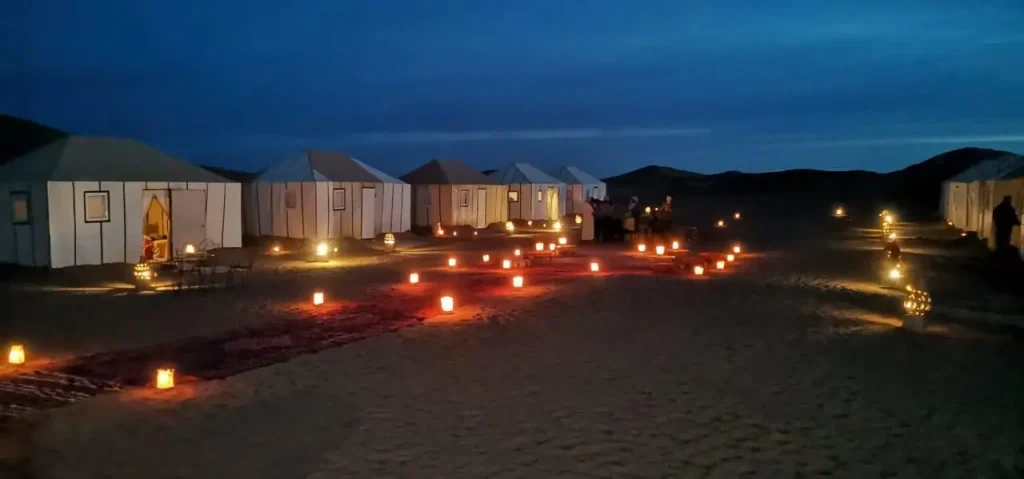
One of Merzouga’s charms is the range of accommodation options that cater to different tastes, budgets, and desired levels of authenticity. From basic Berber camps to luxurious desert retreats, you’ll find something to match your travel style.
Authentic Berber Desert Camp Experience
For travelers seeking an immersive cultural experience, traditional Berber camps offer the most authentic option. These camps typically feature:
- Hand-woven wool tents arranged in a circle
- Simple mattresses with plenty of blankets
- Shared bathroom facilities (sometimes quite basic)
- Campfire gatherings with traditional music
- Simple but delicious home-cooked meals
The emphasis here is on cultural exchange rather than luxury. You’ll eat communally, often sitting on rugs around low tables, and engage directly with your Berber hosts. While the accommodations might be rustic, the experience of falling asleep under countless stars after an evening of music and storytelling creates memories that no luxury hotel could match.
Luxury Glamping Options with Modern Amenities
For those who want to experience the magic of the desert without sacrificing comfort, a new generation of “glamping” (glamorous camping) options has emerged in the Merzouga region. These upscale desert camps offer:
- Spacious canvas tents with proper beds and quality linens
- Private en-suite bathrooms with running water
- Electricity (often solar-powered)
- Beautifully decorated interiors with traditional Moroccan elements
- Restaurant-quality dining experiences
- Organized activities and excursions
These camps strike a balance between authenticity and comfort, allowing you to immerse yourself in the desert environment while still enjoying many modern conveniences. The premium camps are often positioned in more remote areas of the dunes, providing greater privacy and a more pristine desert experience.
If you prefer to stay in a permanent structure, several small hotels and traditional kasbahs (fortified houses) in and around Merzouga village offer comfortable rooms with easy access to the dunes. These often feature refreshing swimming pools—a welcome luxury after a hot day in the desert!
Our Exclusive Merzouga Desert Tours
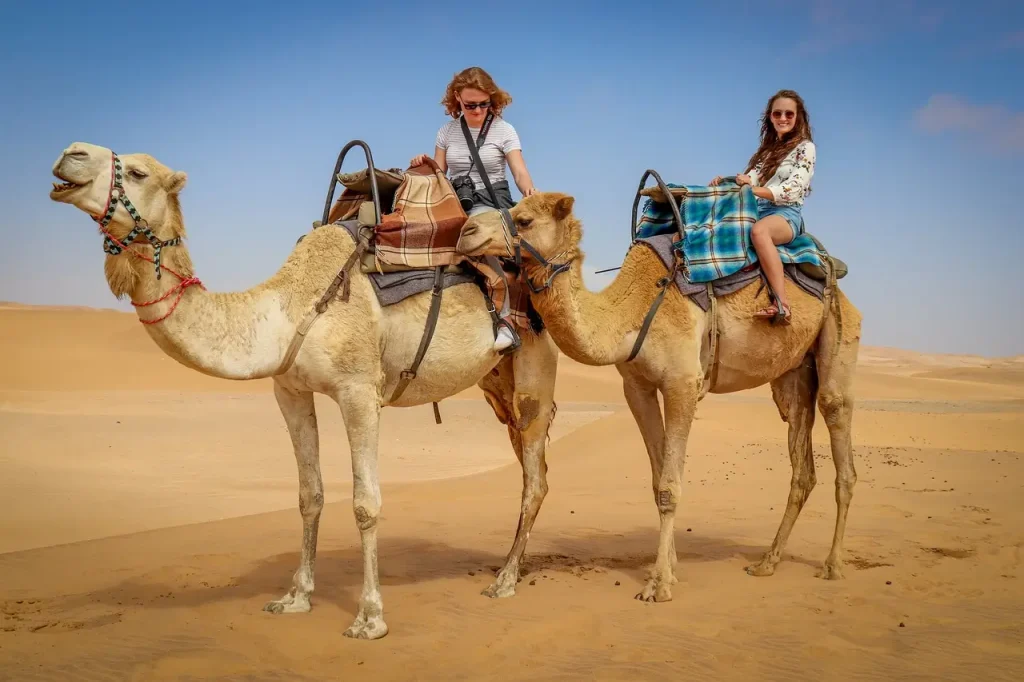
At The Moroccan Tours, we specialize in creating unforgettable desert experiences tailored to your preferences. We offer all types of desert tours to Erg Chebbi in Merzouga from anywhere in Morocco, with flexible itineraries that can be customized to your schedule and interests.
3-Day Marrakech to Merzouga Round Trip Adventure
Our most popular tour takes you from the bustling markets of Marrakech to the serene dunes of Merzouga and back in an action-packed three-day journey. Here’s what you can expect:
Day 1: Marrakech to Dades Valley
- Early morning departure from your Marrakech accommodation
- Cross the spectacular High Atlas Mountains via the Tizi n’Tichka pass (2,260m)
- Visit the UNESCO World Heritage site of Ait Ben Haddou kasbah
- Explore the “Hollywood of Morocco” in Ouarzazate and its film studios
- Travel through the Valley of Roses and Skoura palm grove
- Overnight in a charming guesthouse in the Dades Valley
Day 2: Dades Valley to Merzouga Desert
- Morning drive through the Todra Gorge with its towering 300m cliffs
- Visit traditional Berber villages and markets along the route
- Stop in the ancient city of Rissani, once an important caravan hub
- Arrive in Merzouga by late afternoon
- Camel trek into the heart of Erg Chebbi dunes for sunset
- Overnight in a desert camp with traditional dinner and music
Day 3: Merzouga to Marrakech
- Optional early morning sunrise viewing
- Return to Merzouga village by camel or 4×4
- Long but scenic drive back to Marrakech with strategic stops
- Arrive in Marrakech by evening
This fast-paced tour covers many of Morocco’s highlights in a short time, making it ideal for travelers with limited vacation days.
3-Day Marrakech to Fes via Merzouga Journey
For travelers who want to continue exploring Morocco’s northern regions, our Marrakech to Fes desert tour offers the perfect solution:
Day 1: Marrakech to Dades Valley
- Similar route as the round trip through the Atlas Mountains
- Visits to Ait Ben Haddou and Ouarzazate
- Overnight in the dramatic landscapes of Dades or Todra Gorge
Day 2: Dades Valley to Merzouga Desert
- Explore the stunning Todra Gorge
- Drive through changing desert landscapes to Merzouga
- Late afternoon camel trek into the dunes
- Overnight in a desert camp with traditional entertainment
Day 3: Merzouga to Fes
- Return from the desert after sunrise
- Journey north through the Middle Atlas Mountains
- Visit the cedar forests near Azrou (famous for Barbary macaques)
- Pass through Ifrane, known as “Little Switzerland”
- Arrive in Fes by evening
This one-way route allows you to experience two of Morocco’s imperial cities and the desert without any backtracking, maximizing your sightseeing time.
Book Your Tour Now
Customized Merzouga Tour Options
Beyond our standard itineraries, we specialize in creating custom tours that match your specific interests, timeframe, and travel style. We can arrange desert experiences from any starting point in Morocco, whether it’s Casablanca, Tangier, Rabat, or smaller cities.
Some popular customizations include:
- Extended time in the desert (4-5 days for deeper exploration)
- Specialized photography tours timed for optimal lighting conditions
- Cultural immersion experiences with longer stays in Berber villages
- Adventure-focused itineraries with more hiking and outdoor activities
- Luxury desert experiences with premium accommodations throughout
Whatever your dream Sahara experience entails, we can tailor an itinerary just for you. Our local expertise ensures you’ll discover the magic of Merzouga in the way that best suits your travel style.
Practical Tips for Your Merzouga Desert Adventure
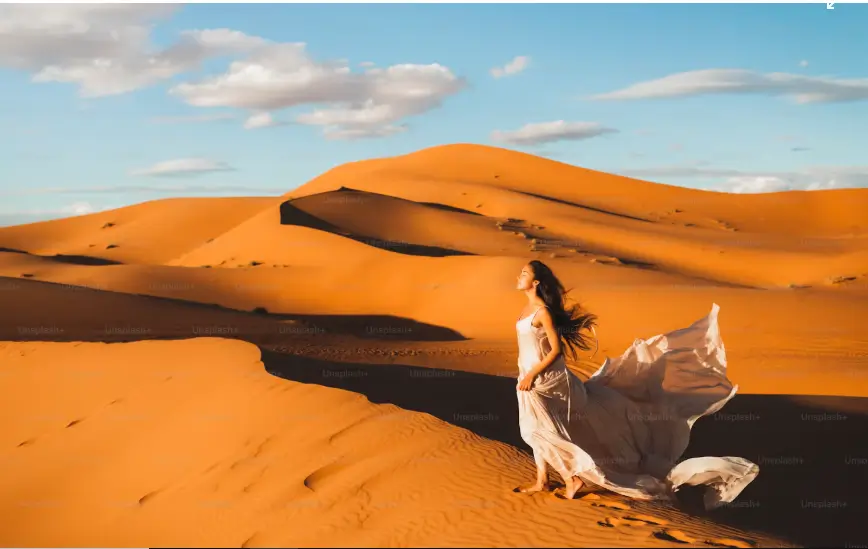
To help you prepare for your desert journey, I’ve compiled some essential advice based on years of guiding travelers through this remarkable region.
What to Pack for Your Desert Expedition
The desert environment requires some specific items that you might not pack for other destinations. Here’s a checklist of essentials:
Clothing:
- Lightweight, breathable long-sleeved shirts and pants (for sun protection)
- Warm layers for evenings (desert temperatures drop significantly after sunset)
- Sturdy closed shoes for walking in sand
- Sandals for around camp
- Light scarf or shemagh (can be purchased in Morocco) – multifunctional for sun protection, dust, and warmth
- Sun hat with good coverage
Protection:
- High SPF sunscreen (the desert sun is intense)
- Lip balm with SPF
- Quality sunglasses
- Small first aid kit including blister treatment
Practical items:
- Headlamp or flashlight (essential for navigating camps at night)
- Camera with extra batteries (no charging in basic camps)
- Wet wipes and hand sanitizer
- Small daypack for essential items during camel treks
- Reusable water bottle
Optional but recommended:
- Binoculars for wildlife spotting and stargazing
- Camera lens cleaning kit (sand gets everywhere!)
- Power bank for recharging devices
- Earplugs in case of windy nights
Health and Safety Considerations
While Merzouga is generally a safe destination, the desert environment presents some unique challenges:
Stay hydrated: The dry desert air causes more rapid fluid loss than you might notice. Drink more water than you think you need, even if you don’t feel thirsty.
Sun protection: The combination of direct sunlight and reflection from the sand creates intense UV exposure. Cover up with clothing, use sunscreen liberally, and limit direct exposure during midday hours.
Physical preparation: Camel riding and dune walking require some physical stamina. If you have back problems, consider 4×4 transportation options instead of camels. When climbing dunes, take it slow—it’s more challenging than it looks!
Food and water safety: Stick to bottled water and properly cooked foods. Most desert camps maintain good hygiene standards, but having some basic medication for stomach issues is wise.
Travel insurance: Ensure your policy covers remote areas and any activities you plan to participate in. Medical facilities in Merzouga are limited, with major hospitals hours away in larger cities.
Beyond Merzouga: Nearby Attractions Worth Exploring
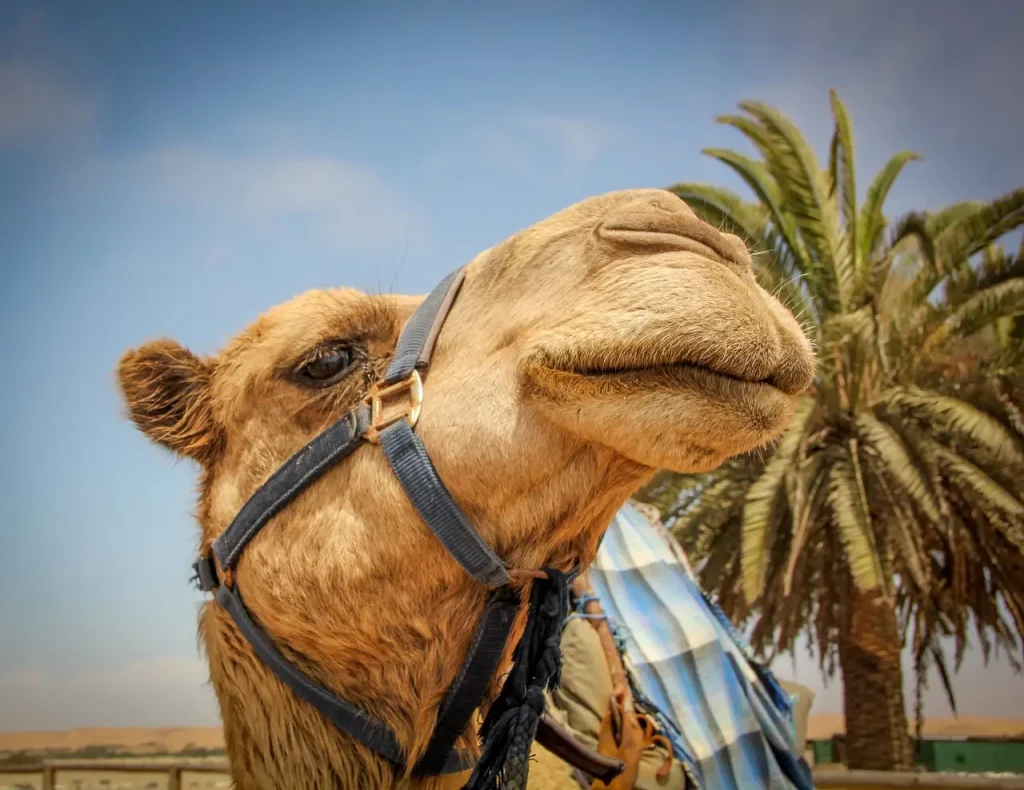
While the Erg Chebbi dunes are certainly the highlight of the region, several fascinating attractions within a few hours’ drive complement your desert experience.
The Ancient Ksar of Rissani
Just 35 kilometers from Merzouga lies Rissani, a historic desert crossroads that once served as the last major settlement before caravans entered the deep Sahara. The town was formerly known as Sijilmassa and was an important trading hub from the 8th to the 14th centuries.
Today, Rissani is known for:
- Its authentic, non-touristy souk (market) held on Tuesdays, Thursdays, and Sundays
- The ruins of the ancient city of Sijilmassa
- The mausoleum of Moulay Ali Cherif, founder of the Alaouite dynasty that still rules Morocco today
- Traditional architecture including impressive adobe kasbahs
A visit to Rissani offers insights into the historical importance of desert trade routes and a shopping experience far more authentic than you’ll find in major tourist centers.
Todra and Dades Gorges
Northwest of Merzouga, the dramatic canyons carved by the Todra and Dades Rivers create some of Morocco’s most spectacular landscapes.
Todra Gorge features sheer rock walls rising 300 meters from the narrow canyon floor, which at its narrowest point spans just 10 meters. The contrast between the towering cliffs and the lush palm groves along the river creates a striking visual. Rock climbers from around the world come to tackle the numerous routes on the gorge’s walls.
Dades Gorge, with its unusual rock formations and series of hairpin bends known as the “Monkey Fingers,” offers some of Morocco’s most dramatic driving routes. The area is dotted with ancient kasbahs and traditional Berber villages perched precariously on hillsides.
Both gorges make excellent stopping points on your journey to or from Merzouga, providing a striking contrast to the sand-dominated landscapes of Erg Chebbi.
Frequently Asked Questions About Merzouga
What is the best time of year to visit Merzouga?
The ideal times to visit Merzouga are during spring (March to May) and fall (September to November) when temperatures are moderate. Daytime temperatures typically range from 75-90°F (24-32°C), cooling significantly at night. Summer (June-August) brings extreme heat with temperatures often exceeding 100°F (38°C), making outdoor activities challenging. Winter (December-February) offers pleasant daytime temperatures but very cold nights, sometimes approaching freezing. Winter also occasionally brings the special opportunity to see the seasonal salt lake filled with water and migratory birds.
How physically demanding is the camel trek to the desert camp?
Most standard camel treks to desert camps involve 1-2 hours of riding each way, which is manageable for people with average fitness levels. The main challenge isn’t physical exertion but rather adjusting to the somewhat uncomfortable riding position. People with back or hip problems may find camel riding difficult and should consider 4×4 transportation alternatives, which most tour operators can arrange. The camps themselves generally don’t require significant physical activity, though climbing dunes (which is optional) can be strenuous but rewarding.
Is it possible to experience Merzouga as a day trip from Marrakech?
A day trip to Merzouga from Marrakech is not feasible due to the distance—it’s approximately 350 miles (560 km) and takes 8-10 hours of driving each way. The minimum recommended trip is 3 days/2 nights, with one night in the desert and another en route. To truly appreciate Merzouga and the surrounding region, a 4-5 day itinerary is ideal. For those with very limited time, Agafay Desert near Marrakech offers a more accessible (though less spectacular) desert experience that can be visited in a day.
What should I pack for a comfortable desert camping experience in Merzouga?
For a comfortable desert camping experience, pack lightweight, breathable clothing that covers your skin for sun protection during the day, plus warm layers for cold desert nights. Essential items include a headlamp or flashlight (camps have limited lighting), a small daypack, wet wipes (showers are rarely available in traditional camps), sunscreen, a hat, sunglasses, and any personal medications. Camera equipment and power banks are recommended as charging facilities are limited. Most camps provide all bedding and meals, so you only need to carry personal items. Pack efficiently in a soft-sided bag, as hard suitcases are difficult to transport on camels.
Why Merzouga Should Be on Your Moroccan Itinerary
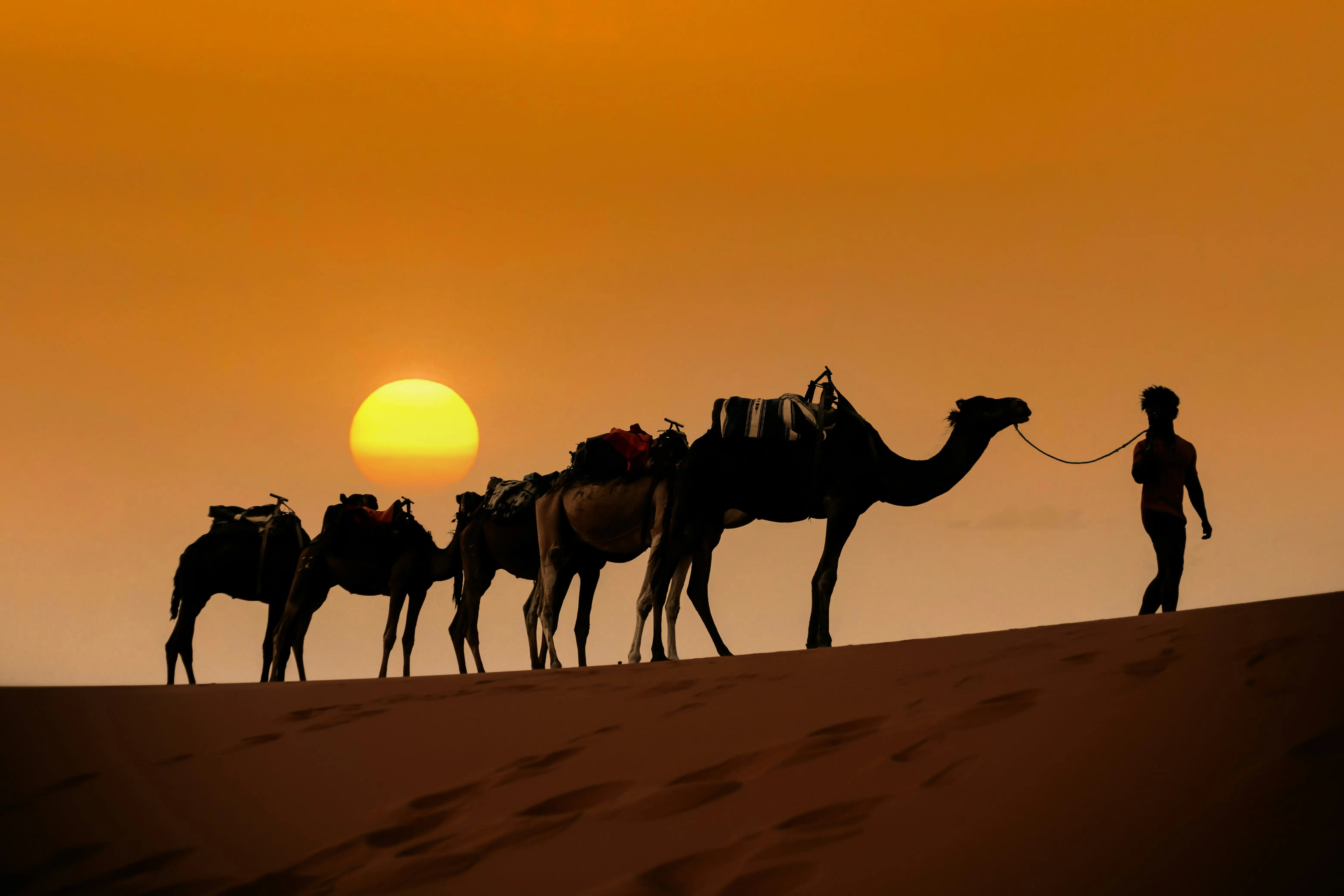
After guiding countless travelers through the magical landscapes of Merzouga, I’ve witnessed the transformative power this place holds. There’s something about the vast silence of the dunes, the brilliant stars overhead, and the timeless culture of the desert that shifts something in your perspective.
Merzouga isn’t just another stop on a Moroccan tour—it’s often the highlight that travelers remember most vividly years later. The contrast between the busy imperial cities and the serene emptiness of the Sahara creates a balanced experience of Morocco‘s diverse identity.
“We travel not to escape life, but for life not to escape us. Nowhere is this more true than in the timeless dunes of Merzouga, where each sunrise feels like the first dawn the world has ever known.”
Whether you’re seeking adventure, cultural immersion, photographic opportunities, or simply a chance to disconnect from the modern world, Merzouga offers experiences that will become treasured memories.
At The Moroccan Tours, we take pride in crafting desert journeys that match your unique travel style. From the moment you contact us until your final goodbye in the Sahara, we handle all the logistics so you can focus entirely on the experience.
The magic of Merzouga awaits. Will you answer its call?
The Moroccan Tours offers all types of desert tours to Erg Chebbi in Merzouga from anywhere in Morocco. Whether you prefer our popular 3-day packages from Marrakech or Fes, or a completely customized itinerary starting from any location on your preferred dates, we’ll create the perfect desert adventure for you. Contact us today to begin planning your Saharan journey!
